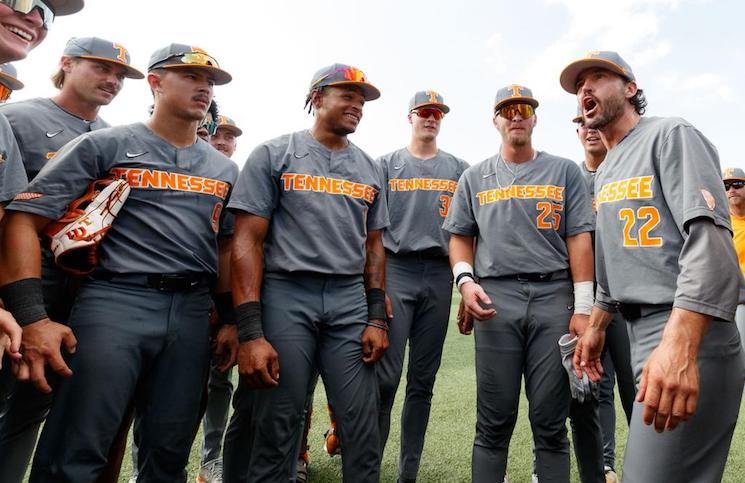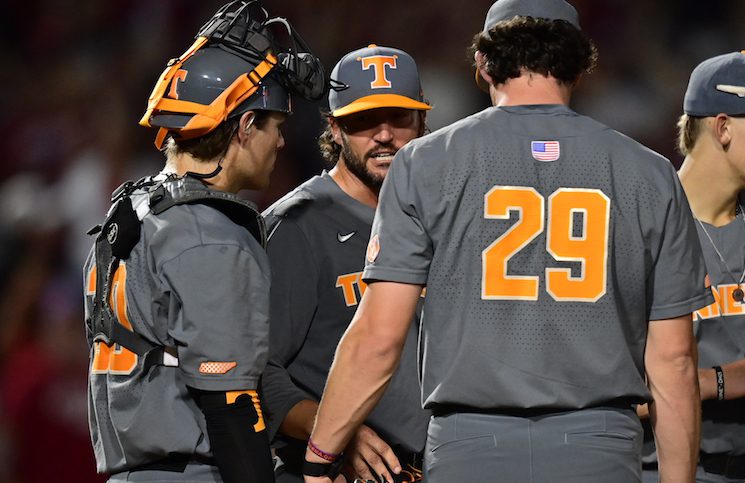
Christmas is over, and the college football bowl season is about to begin in earnest. Tennessee’s football team will be participating in the college football postseason for the first time since 2016, and their opponent is also going bowling for the first time since 2016.
Tennessee (7-5) and Indiana (8-4) will be facing off in the TaxSlayer Gator Bowl down in Jacksonville, Florida on January 2nd. The two teams have only played once before in college football, with the Vols beating the Hoosiers 27-22 in the 1988 Peach Bowl to cap off the 1987 season.
This year’s editions of the Vols and Hoosiers are fairly different in how they’ve gone about winning games. Indiana relies on a pass-heavy offense that puts up a good amount of points while Tennessee leans on their defense and uses some big plays on offense to separate themselves from their opponents.
Here’s a look at how Tennessee and Indiana compare statistically this season, with some more in-depth analysis of the numbers at the end.
Offense
Points Per Game
Tennessee: 24.3
Indiana: 32.6
Yards Per Game
Tennessee: 364.8
Indiana: 443.6
Yards Per Play
Tennessee: 5.82
Indiana: 6.08
Passing Yards Per Game
Tennessee: 220.0
Indiana: 308.7
Rushing Yards Per Game
Tennessee: 144.8
Indiana: 134.9
Third Down Conversion
Tennessee: 43.5%
Indiana: 48.2%
Red Zone Scoring %
Tennessee: 78.6%
Indiana: 84.8%
Red Zone TD Scoring %
Tennessee: 50.0%
Indiana: 64.4%
Total Plays
Tennessee: 752
Indiana: 875
Turnovers
Tennessee: 18
Indiana: 14
Sacks Allowed
Tennessee: 20
Indiana: 23
Tackles for Loss Allowed
Tennessee: 64
Indiana: 65
Plays of 20+ Yards
Tennessee: 54
Indiana: 66
Defense
Points Per Game Allowed
Tennessee: 21.7
Indiana: 24.5
Yards Per Game Allowed
Tennessee: 337.1
Indiana: 350.4
Yards Per Play Allowed
Tennessee: 5.04
Indiana: 5.36
Passing Yards Per Game Allowed
Tennessee: 191.3
Indiana: 211.7
Rushing Yards Per Game Allowed
Tennessee: 145.8
Indiana: 138.8
Opponent Third Down Conversion
Tennessee: 40.0%
Indiana: 34.8%
Opponent Red Zone Scoring %
Tennessee: 80.9%
Indiana: 90.9%
Opponent Red Zone TD Scoring %
Tennessee: 61.9%
Indiana: 66.7%
Total Plays Allowed
Tennessee: 803
Indiana: 784
Turnovers Forced
Tennessee: 18
Indiana: 15
Sacks
Tennessee: 30
Indiana: 26
Tackles for Loss
Tennessee: 62
Indiana: 75
Plays of 20+ Yards Allowed
Tennessee: 34
Indiana: 53

One thing that immediately stands out about comparing the numbers between these two teams is just how many more plays Indiana has run on offense than the Vols. The Hoosiers have run over 120 more offensive plays this season than UT, averaging almost 73 plays per game. Tennessee, meanwhile, has averaged 62.7 plays a game on offense. Indiana’s 875 offensive plays ranks 48th in the FBS while UT’s 752 plays ranks 126th out of 130 teams.
Because of that, Indiana has been able to keep the ball away from their opponents, only giving up 784 plays (65.3 per game). The Vols have kept it pretty even with their opponents, allowing 803 plays (66.9) to the teams they’ve faced.
Overall, Indiana’s offensive numbers look far more impressive than Tennessee’s. But when you consider the massive discrepancy in plays run by both teams, the Vols’ offense isn’t as inefficient as you might think, at least compared to Indiana’s numbers.
The Hoosiers are only averaging 0.26 yards per play more than Tennessee’s offense, and the Vols have generally faced more stout defenses than Indiana this season as well. Indiana did face Ohio State and Michigan, two top 10 defenses in terms of yards allowed. But Tennessee faced three top 10 defenses (Georgia, Florida, UAB), and three more of their opponents (Missouri, Alabama, Kentucky) rank inside the top 25. Indiana faced three other defenses in the top 26 (Michigan State, Penn State, Northwestern).
Tennessee’s record against those six top 25 defenses: 3-3. Indiana’s record against their five opponents inside the top 26 in defense: 1-4.
Defensively, the Vols have generally been more efficient. This is especially true in the red zone, when it comes to forcing turnovers, and the amount of big plays allowed.
The Vols rank fourth in the entire FBS in plays of 20 or more yards allowed, only giving up 34 all season. Indiana, meanwhile, has given up 53 such plays this season, and they’ve held opponents to fewer total plays. That means not only have the Vols minimized explosive plays, but they’ve also held opponents to an even smaller percentage of their total plays resulting in big gains than the Hoosiers.
In the red zone, Tennessee is holding their own better than Indiana as well. The Hoosiers are allowing teams to score 90 percent of the time they make it to the “red area,” while Tennessee is holding teams to an 80 percent scoring rate.
The biggest areas to watch will be third down conversions and turnovers. Tennessee has forced more turnovers than Indiana, but the Hoosiers have given the ball away less than the Vols. Indiana also has much better luck on third down than the Vols on both offense and defense, boasting a superior conversion percentage on both sides of the ball.
But all these numbers are just in a vacuum. As I mentioned earlier, Tennessee has generally gone against better competition than Indiana, and that’s not accounted for in the raw data.
Indiana has faced four teams this season that finished with a 6-6 record or better. They lost to all six of them (Ohio State, Michigan State, Penn State, Michigan), and they were blown out in two of those games. None of the eight teams Indiana beat this season finished with better than a 5-7 record. The combined record of the eight teams the Hoosiers defeated was 25-71.
Tennessee, meanwhile, finished with four wins over teams with a 6-6 record or better (not including 6-6 Chattanooga, an FCS school).
These two teams present a lot of intriguing match-ups, and seeing how the Vols’ defense can hold up against a good Indiana offense will be the highlight of the game.
The TaxSlayer Gator Bowl kicks off at 7:00 PM Eastern on January 2nd. The game will be televised on ESPN.



